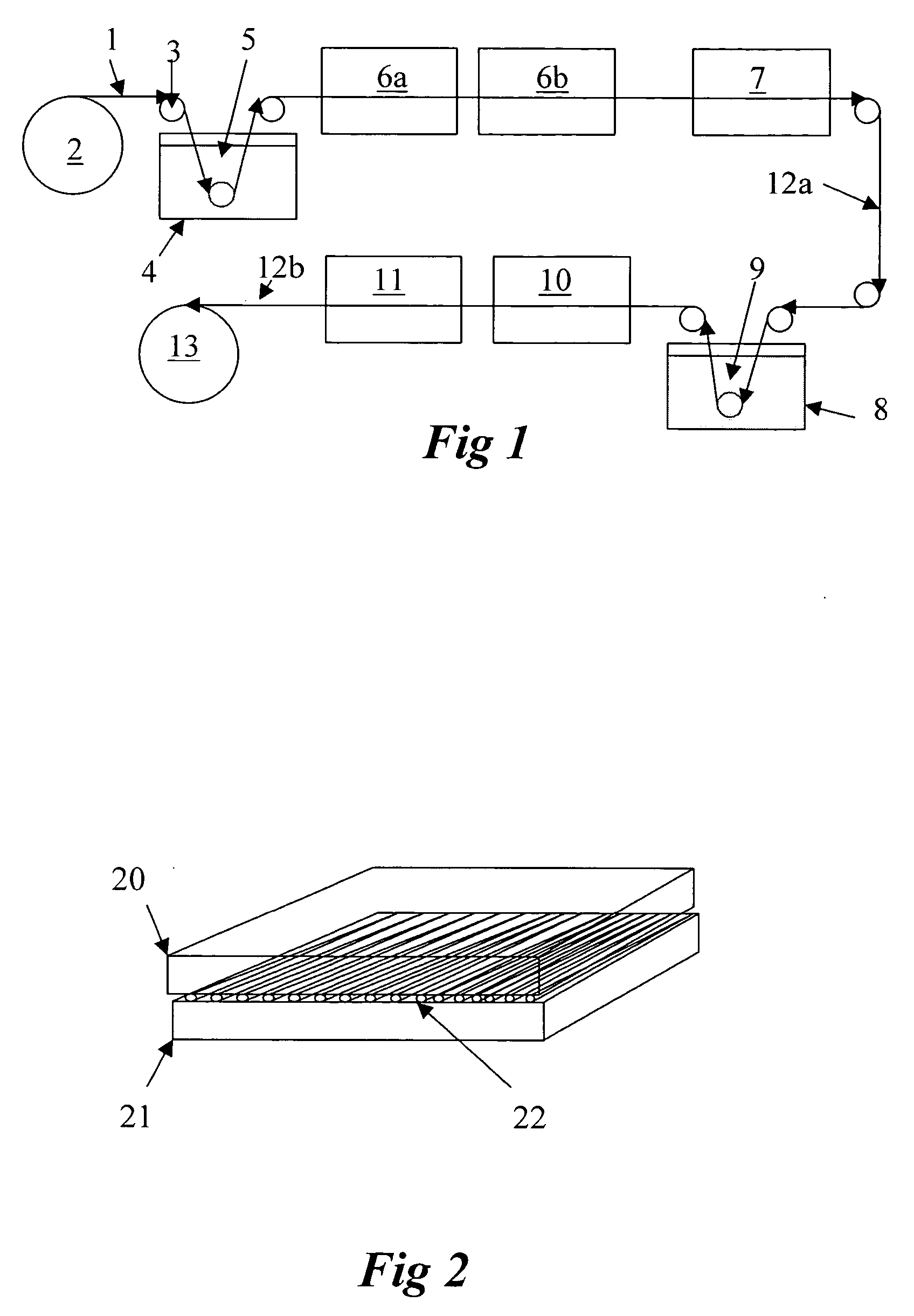Composite article and its manufacture
a technology of composite articles and composite materials, applied in the field of composite articles, can solve the problems of unsatisfactory use of silicone rubber bonding system, many reinforcement cords are also unsuitable for such high temperature yet low modulus applications, and achieve the effects of enhancing the adhesion of organic polymers, improving the bonding, and promoting adhesion
- Summary
- Abstract
- Description
- Claims
- Application Information
AI Technical Summary
Benefits of technology
Problems solved by technology
Method used
Image
Examples
Embodiment Construction
[0012] According to the present invention there is provided a composite article comprising a polysiloxane or silicone rubber matrix reinforced with polyaramid textile characterized in that the polyaramid textile is bonded to the silicone rubber by means of a bonding composition comprising an acryloxy organosilane of formula (I):
[0013] In formula (I) R1 is a moiety selected from methyl, ethyl, combinations thereof and methoxyethyl, [0014] R2 is a moiety selected from methoxy, ethoxy, methyl, ethyl, and methoxyethoxy. [0015] R4 is selected from C2-C8 alkylene, branched or unbranched. [0016] R5 is a moiety selected from hydrogen and methyl and is preferably methyl.
[0017] Preferred acryloxy organosilanes have formula (II)
[0018] Where R6 is C2-C4 alkylene and R5 is as defined in formula (I).
[0019] The most preferred acryloxy organosilane is 3-methacryloxypropyl trimethoxysilane, which has the formula (III):
[0020] Preferably to obtain the best adhesion the polyaramid is precoated ...
PUM
| Property | Measurement | Unit |
|---|---|---|
| temperature | aaaaa | aaaaa |
| temperature | aaaaa | aaaaa |
| thick | aaaaa | aaaaa |
Abstract
Description
Claims
Application Information
 Login to View More
Login to View More - R&D
- Intellectual Property
- Life Sciences
- Materials
- Tech Scout
- Unparalleled Data Quality
- Higher Quality Content
- 60% Fewer Hallucinations
Browse by: Latest US Patents, China's latest patents, Technical Efficacy Thesaurus, Application Domain, Technology Topic, Popular Technical Reports.
© 2025 PatSnap. All rights reserved.Legal|Privacy policy|Modern Slavery Act Transparency Statement|Sitemap|About US| Contact US: help@patsnap.com



